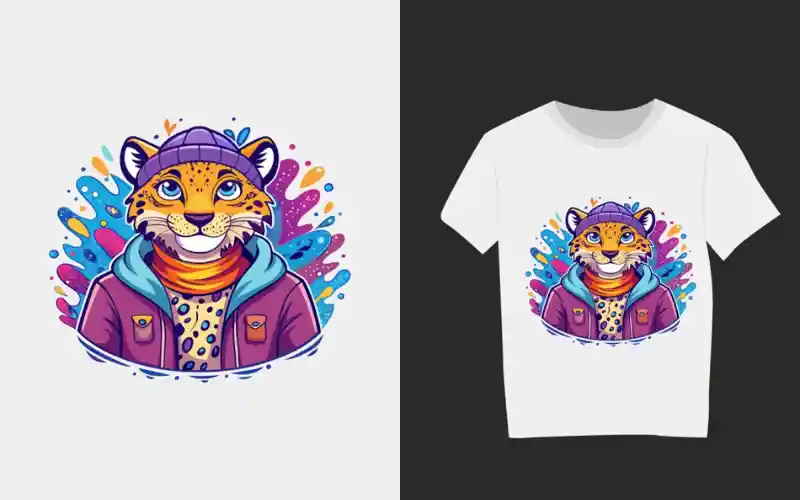What is DTF and How Does It Compare to Other Methods?
DTF (Direct-to-Film) is an advanced printing technique that is rapidly gaining popularity in the custom apparel industry. Unlike traditional methods, DTF prints designs onto a special film before transferring them onto fabric using heat and pressure. This process allows for high-quality, full-color prints with exceptional durability. When compared to other printing techniques, DTF offers a unique combination of efficiency, versatility, and cost-effectiveness, making it an ideal solution for businesses looking to expand their custom printing capabilities.
How DTF Transfers Outperform Screen Printing
Screen printing has been a dominant method for decades, but DTF transfers are proving to be a strong competitor. Unlike screen printing, which requires separate stencils for each color, DTF transfers allow full-color designs to be printed in a single step. This reduces setup time and labor costs while increasing design flexibility. Additionally, DTF transfers provide greater durability and color vibrancy without the risk of ink cracking or fading over time. While screen printing excels in bulk production, DTF transfers are the better choice for detailed, multicolor prints on a variety of fabrics.
DTF vs. Heat Transfer Vinyl: Which is More Efficient?
Heat Transfer Vinyl (HTV) is widely used for customizing apparel, but DTF offers several advantages. Unlike HTV, which requires cutting and layering different vinyl sheets, DTF allows for complex designs with gradients and multiple colors without additional steps. HTV can also feel heavy and stiff, whereas DTF prints have a softer, more flexible finish. Additionally, DTF is more durable and stretch-resistant, making it the preferred choice for activewear and everyday clothing.
The Advantages of DTF Transfers Over Sublimation
Sublimation printing is a popular method for high-resolution prints, but it has significant limitations. Unlike sublimation, which only works on polyester fabrics, DTF transfers can be applied to cotton, polyester, blends, and even synthetic materials. This versatility makes DTF transfers a more practical option for businesses offering a wide range of custom apparel. Additionally, sublimation requires light-colored fabrics for optimal results, while DTF transfers work on both light and dark garments without losing vibrancy.
Why Businesses Are Switching to DTF Printing
Many businesses are choosing DTF over other printing methods due to its cost-effectiveness and efficiency. Traditional methods like screen printing require expensive setups, while DTF allows for on-demand printing with minimal investment. Additionally, DTF prints do not require pre-treatment, reducing production time and material waste. The ability to print on a variety of surfaces and fabrics further increases its appeal, making DTF a top choice for businesses looking to scale their operations.
The Durability Factor: How DTF Transfers Hold Up Over Time
One of the key benefits of DTF transfers is their durability. Unlike screen prints, which can crack over time, or HTV, which may peel, DTF transfers provide long-lasting results. These prints maintain their vibrancy even after multiple washes, ensuring that designs look new for longer. Additionally, DTF transfers have excellent stretch and flexibility, making them ideal for activewear and high-movement fabrics.
How DTF Compares to Direct-to-Garment (DTG) Printing
Direct-to-Garment (DTG) printing is another advanced technique, but DTF offers distinct advantages. While DTG requires pre-treatment for dark fabrics, DTF eliminates this step, simplifying the process. Additionally, DTF prints provide a more vibrant and durable finish, while DTG prints may fade faster over time. The ability to print on a broader range of materials gives DTF an edge over DTG in terms of versatility and cost-effectiveness.
Which Printing Method is Best for Your Business?
Choosing the right printing method depends on factors like design complexity, production volume, and fabric type. For businesses looking for an efficient, durable, and cost-effective solution, DTF is an excellent option. DTF transfers provide unmatched versatility, allowing for intricate designs on various fabrics with minimal effort. While other methods still have their place, DTF stands out as the best all-around printing solution for modern apparel customization.
Conclusion
With its superior flexibility, durability, and ease of use, DTF is redefining the printing industry. Whether compared to screen printing, sublimation, HTV, or DTG, DTF transfers consistently outperform in terms of quality and efficiency. As more businesses make the switch, it is clear that DTF is not just an alternative—it is the future of custom apparel printing.
Frequently Asked Questions
- What makes DTF printing different from other methods?
- DTF allows for full-color prints on a variety of fabrics without requiring pre-treatment.
- How do DTF transfers compare to screen printing?
- DTF transfers eliminate the need for stencils, making full-color printing faster and more efficient.
- Can DTF be used on dark fabrics?
- Yes, DTF transfers work on both light and dark fabrics with excellent color vibrancy.
- Are DTF prints durable?
- Yes, DTF prints are highly durable, resisting cracking and fading over multiple washes.
- Does DTF require special equipment?
- Yes, DTF printing requires a specialized printer, transfer film, adhesive powder, and a heat press.
- Is DTF more cost-effective than screen printing?
- Yes, DTF has lower setup costs and allows for small-batch production.
- Can DTF transfers be used on accessories?
- Yes, DTF transfers can be applied to hats, bags, and other non-fabric surfaces.
- How long does the DTF printing process take?
- The DTF process is quick, allowing for faster turnaround times compared to traditional methods.
- Does DTF printing require pre-treatment?
- No, DTF transfers do not require pre-treatment, making the process more efficient.
- Is DTF environmentally friendly?
- DTF produces less waste and requires less water compared to other printing techniques.




